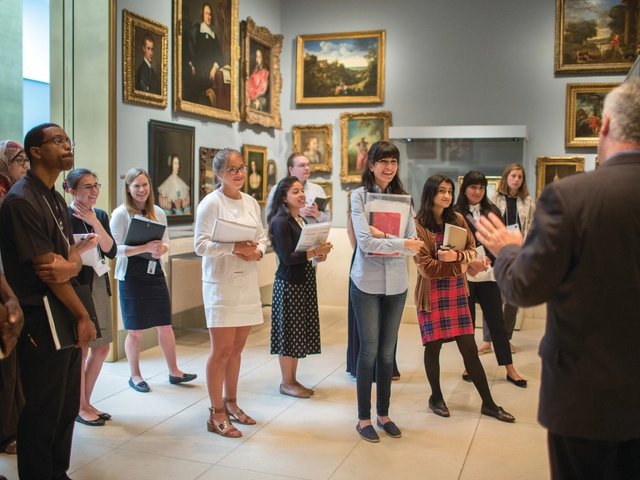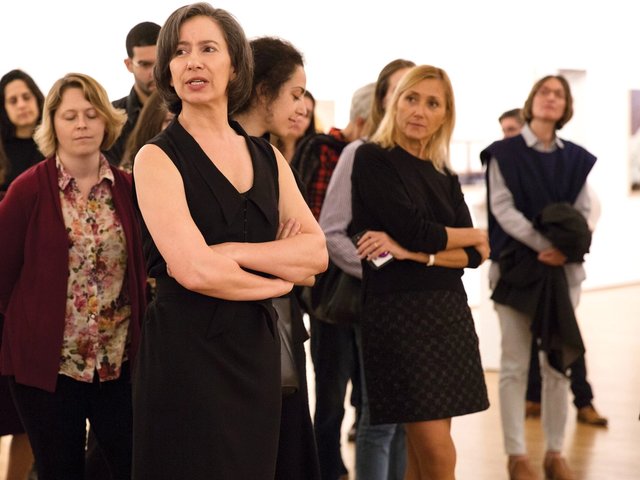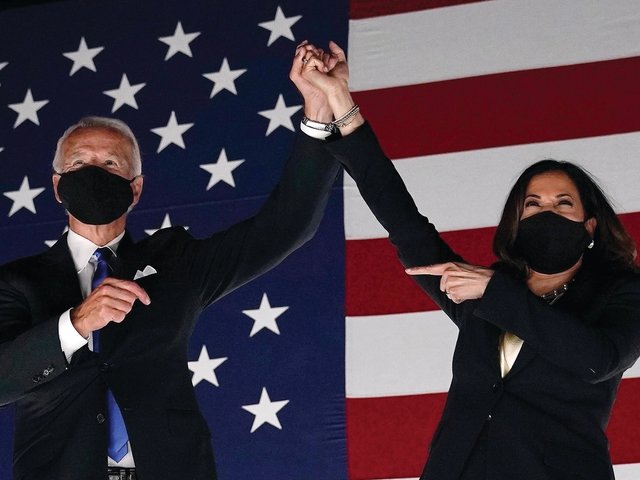Donald Trump’s election triumph last month underscores stark divisions in the US. On the morning after the political outsider’s surprise victory over Hillary Clinton, many US and international artists were quick to express their shock and dismay that the property tycoon, who has a track record of sexist and xenophobic comments, was headed to the White House. His divisive campaign rhetoric included promising to build a wall on the US-Mexico border, to create a deportation force for illegal immigrants, and to ban Muslims from entering the US. Trump may moderate his stance by the time he arrives next month in Washington, DC—where he has pledged to “drain the swamp”. What that means in reality remains to be seen. We asked a range of experts from across the US what they thought a Trump administration could mean for the arts and the nation’s cultural institutions.
Lynn Zelevansky, director of the Carnegie Museum of Art in Pittsburgh, Pennsylvania Trump voters, Zelevansky says, “are our neighbours—they aren’t some distant, abstract idea.” Pennsylvania is one of the battleground states that helped Trump to victory. “I think we have a responsibility to them as well as to the people who agree with us. Generally, working class people don’t think museums are for them. How we get them in the door, how we reach them, how we address their issues—I don’t have any quick answers. We have to sit down and try out ideas and see what works.”
Kathryn Kanjo, Director of the Museum of Contemporary Art San Diego “We are most aware that we are 15 miles from the US-Mexico border. Our mandate as an institution emphasises our region and a commitment to a bi-national dialogue. Our collection is deep in Latin American art. We’re all thinking about what does the new regime mean for the economy and policy—things that might impact the business of running museums or of philanthropy in general. But maybe my greater concern is that there could be a cultural chilling towards freedom of expression. It’s less about the government funding and more about the climate of tolerance—or intolerance. Some of us have gone through the culture wars and you think, ‘Oh no, not that again.’ We have to be aware that every exhibition and every acquisition may be viewed through a new political lens. And we can’t compromise on what we do.”
Julian Zugazagoitia, director of the Nelson-Atkins Museum in Kansas City, Missouri “This was my first time voting as an American citizen, so it brought into focus what being a citizen in this country means… We have to be able to pause and say, ‘I understand that your point of view is different—can you explain it more?’ At a recent dinner, I was questioning the idea of the Electoral College and if it should be replaced. And people were saying no, because then the vote of people like us in the Midwest wouldn’t be represented. And that was the first time that I really listened intently and did not assume anything… Witnessing the orchestration of the inauguration will be interesting. What are the aesthetic signs? Because that is a choreographed exercise in which so many things have meaning. Is there a poet laureate invited to say something? Which musicians are coming? All those symbols will carry a lot of weight.”
Joel Wachs, President of the andy Warhol Foundation for the visual arts “Our efforts to protect and support artists are more important now than ever. We will continue and increase our support for artist-centred community-based arts organisations in all 50 states. They are keepers of the flame, the protectors of freedom of expression, and the powerful voices that will speak out against bigotry, racism and hate.”
Robert Storr, former dean of the Yale university School of Art “What cultural institutions can do now is survive. I think there will be a full-fledged assault on public funding for the arts. When the supreme right can’t get everything they want, one way to satisfy them is to tear into the so-called biased press, like National Public Radio and public art funding. Private funding of art institutions outranks public funding by a long shot, but the validation that comes from public funding is an issue. Institutions will have to argue for what they do, and who they do it for. They have to do it without trying to folksy themselves up or dumb themselves down. They have to explain that their constituencies are very large and diverse, and that they have been a success story in this country for decades. Donors should start underwriting the cost of admission, lectures and courses—things that engage people. Boards should trust museum professionals to do their work and not interfere. And they must be careful to avoid the appearance of conflict of interest. It’s a warning sign: clean up your act whether it’s dirty or not because you’ll be under a microscope.”
Adrian Ellis, founder of the New York-based firm AEA Consulting Ellis says it is highly likely that the US will experience “a fairly brutal culture war because of what culture represents: the values of the elites who have done well under the status quo”. He fears that the privileges currently enjoyed by arts institutions and philanthropists could be “rocked and ridiculed” by the Trump administration. “Trump wants to be a populist, and he’s got a really easy target,” he says. During the Reagan administration, the 1986 Tax Reform Act limited the amount of money that donors could deduct from their taxes in exchange for the donation of a work of art. Ellis points out: “There are three reasons people give to cultural institutions: because you agree with it, because it’s tax-efficient and because it comes with high prestige. If you take away the tax efficiency and the fashion, you’re left with ‘because you agree with it’. And for many, that’s the weakest of the three reasons. So I see a quiet exodus.”
Jock Reynolds, director of the Yale University Art Gallery Trump is “a complete tabula rasa at this point. We don’t know anything about his interests in the arts except that his collection includes two portraits of himself paid for by his foundation, and that his gilded and heavily mirrored apartment aspires to be his own personal version of Versailles. Sadly, it seems more akin to a high-stakes gambler’s penthouse suite on the Las Vegas Strip. Our president-elect has also made no mention that his new Trump International Hotel on Pennsylvania Avenue was not very long ago named the Nancy Hanks Center for the Arts and for many years housed the offices of the NEA [National Endowment for the Arts] and the NEH [National Endowment for the Humanities]. Trump’s recent Twitter rant about the Broadway play Hamilton, demanding an apology from its cast, may be the first shot he fires to ignite a new culture war, but it’s worth waiting a while to see what appointments he makes in the cultural arena after ‘draining the swamp’. Let’s hope he doesn’t choose to repopulate it with cottonmouths and alligators.”
Max Hollein, director of the Fine Arts Museums of San Francisco “None of us thought it was possible, but on the other hand because of Trump’s persona and media status he is the shining example of the xenophobia and populism we can see across Europe: Victor Orban in Hungary; Austria’s election [this month], which may result in a right-wing president; the National Front in France. We are always flabbergasted by the simplicities of populism. Cultural institutions need to react by representing the exact opposite: representing the complexities of the world and showing different cultures, stories of cultural exchanges and cross-fertilisation. That role is more important.” San Francisco’s De Young Museum is planning an exhibition on fashion and Islam next year. “It will be a celebration, but also show how the burkini has been banned in France. Culture and politics are all intertwined.”




